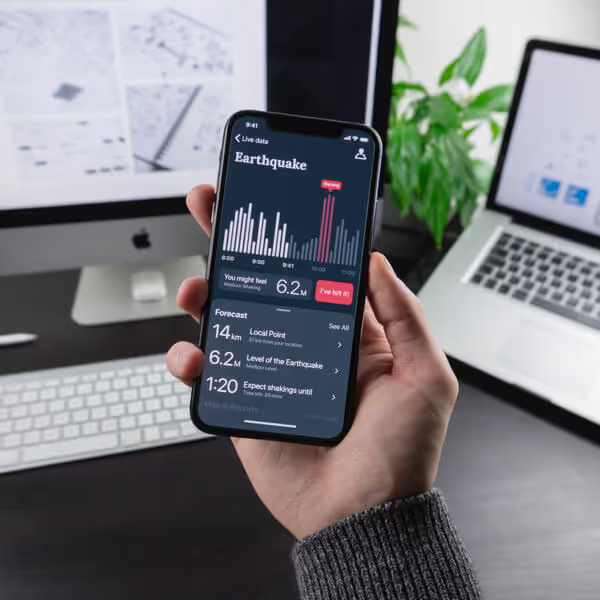ongratulations - your website visitor just converted.
They filled the form, booked the demo, or downloaded the guide.
Most businesses would call that a win and move on.
But smart marketers know that conversion isn’t the end of the journey - it’s the beginning of the next one.
Welcome to Conversion Momentum: the art (and science) of maintaining trust, emotion, and engagement after the first action.
Because a conversion without momentum is like a handshake with no follow-through.
The Myth of “The Moment”
We tend to treat conversion like a finish line.
The form is filled, the lead captured, the pixel fires - job done.
But in reality, users don’t think in marketing funnels. They think in experiences.
If that experience drops in quality the moment they hit “submit,” the emotional momentum that led them there evaporates.
That’s why the most successful CRO strategies don’t just focus on getting clicks - they focus on what happens next.
Momentum Starts Before the Click
Every interaction leading up to a conversion builds (or breaks) psychological momentum:
- Fast load times and intuitive UX reduce friction.
- Micro-interactions (like button animations or hover feedback) build confidence.
- Clear copy and reassuring CTAs lower perceived risk.
By the time a user clicks, they’ve already formed a mental model of your reliability.
If the experience after that click doesn’t match the pre-click promise, you’ve lost more than a lead - you’ve lost trust.
CRO focus: Consistency is credibility. Every micro-touchpoint reinforces your brand story.
The Conversion Moment: Make It Feel Effortless
When a user takes action, the process should feel seamless, fast, and emotionally rewarding.
Think of it as a micro-celebration.
- Keep forms short and frictionless.
- Use clear confirmation feedback (no ambiguous “Form submitted” text).
- Include subtle delight - an animation, success message, or progress indicator.
Example:
“Thanks for signing up! You’ll receive your guide in a few minutes. While you wait, see how other businesses used it to double their conversion rates.”
That’s not just a confirmation. That’s momentum.
CRO focus: Reward the action with reassurance and relevance.
Post-Conversion Momentum: Reinforce, Don’t Retreat
Here’s where most websites stop - with a “Thanks” page or confirmation email that feels like a dead end.
But this stage is prime real estate for reinforcing trust and extending engagement.
Think of post-conversion as Act 2 of your user journey: the scene where you turn confidence into commitment.
Momentum strategies that work:
1. Reassure the decision.
Remind users they’ve made a great choice:
“You’re now part of a network of 3,000 businesses improving their brand performance with Brander.”
2. Offer a logical next step.
Don’t leave users hanging - give them context or community.
“Join our newsletter for weekly CRO insights.”
“Book a quick call to see your data in action.”
3. Keep tone and design consistent.
If your thank-you page looks like it was made in another decade (or by another company), the experience breaks.
Consistency signals competence.
4. Automate gracefully.
Automated emails or follow-ups shouldn’t feel robotic. Use human tone, align with the site’s message, and provide immediate value.
CRO focus: The thank-you page is your most underutilised conversion asset. Use it to move people forward, not just away.
The Energy Loop: From One Conversion to Many
When momentum is strong, users naturally keep engaging. They open the next email, attend the webinar, or follow you on LinkedIn.
That’s not luck - it’s design.
Conversion momentum creates a feedback loop where:
- Each positive interaction builds emotional trust.
- That trust lowers resistance for the next action.
- Each action provides data that helps refine the journey.
It’s a self-sustaining system - the marketing equivalent of regenerative energy.
CRO focus: Your conversion funnel shouldn’t leak - it should loop.
Testing for Momentum
You can measure and optimise post-conversion engagement just like pre-conversion behaviour.
Look for:
- Bounce rate on thank-you pages → Are users dropping off immediately?
- Email open and click-through rates → Is your follow-up relevant and timely?
- Sequential conversions → How many users take a second or third action within days?
Use these insights to refine tone, timing, and offers. Even a small post-conversion tweak can lift lifetime engagement rates significantly.
Conversion Is the Start of the Relationship
At its core, conversion momentum is about continuity -on aligning pre-click intent, message, and design with post-click experience.
When you do that, users feel taken care of. They trust you. And trust is what fuels repeat conversions, referrals, and advocacy.
Because great CRO doesn’t just create one “yes.”
It creates a steady rhythm of “yes, again.”

.avif)












